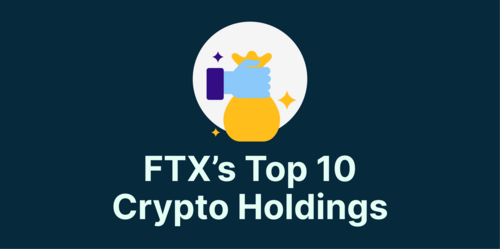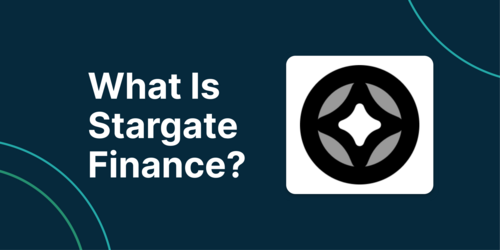The dawn of a multichain future is upon us. The crypto ecosystem has evolved rapidly from just Bitcoin, to many other blockchains each with their own ecosystem and supporters. However, every blockchain is different, and to interact with one another, the proper infrastructure is needed. Most people think of cross-chain interactions as just transferring tokens from one chain to another, but there is much more that can be done than just bridging assets.
An example of this being put to use would be cross-chain governance for protocols and DAOs. With the onset of the multichain ecosystem, many projects have found themselves having to issue their governance token on multiple chains. While this is good as it expands the number of holders, it becomes an issue when undertaking a governance vote. Governance becomes tedious, with the protocol having to decide which chain it should be held on, and whether a separate proposal is deployed on each chain. However, cross-chain protocols will allow for unified governance, as every holder from each chain will be able to cast their vote without having to bridge over their tokens.
In this article, we examine LayerZero, which is a more generalized cross-chain protocol, and the new DeFi dApps (i.e. Stargate, SushiXSwap and Radiant Capital) built on top of this infrastructure.
LayerZero
In the current landscape, the majority of cross-chain bridges are built to facilitate the movement of assets between various blockchains. However, LayerZero doesn’t think of themselves as a bridge but instead as a messaging system or infrastructure for bridges. Essentially, it is a cross-chain communication protocol that’s meant to alleviate current limitations plaguing omnichain activity.
LayerZero was launched in March 2022, and to showcase its technology, Stargate was launched alongside it.
How it works
So how has LayerZero achieved to become an omnichain interoperability protocol? Well, it has two essential components to send messages and verify them; Oracles and Relayers.

Source: LayerZero Whitepaper
Oracle: This forwards the block header (contains receipts root or the message). There is no set oracle, and it could be any oracle of the protocols choosing.
Relayer: Forwards proof of transaction.
Protocols which choose to build on LayerZero technology will have the freedom to control their security parameters. This means they will be able to pick which oracle and relayer to rely on, making it a rather modular process. Sort of like choosing different Lego pieces to form a building of your liking.
Potential Benefits of LayerZero
Siloed Risks
In recent bridge exploits, compromised relayers were the cause of them. This was exacerbated by the fact that the liquidity was stored in a single pool.
Meanwhile, using LayerZero, risk is siloed into “application specific risk” rather than the whole ecosystem. In order for an attack to be performed, there needs to be collusion between specific oracle and relayer. As protocols will be able to pick and choose which oracles and relayers to use, only protocols which are using the rogue oracle-relayer pair may be exploited. While the attack may still occur, the damage is greatly minimized to only specific liquidity pools.
Lightweight & Efficient
LayerZero is aware that the costs to run applications on L1 chains such as Ethereum can be cost intensive, and this cost is borne by users. Obviously with such high costs, such a cross-chain messaging platform wouldn’t be scalable. Therefore, the team had to design it in a lightweight manner.
Typically, block headers are replicated and stored within the client, which of course takes up storage space. Instead, the task of fetching block headers are done by the oracle and relayers off-chain, making it lightweight.
More than just asset bridging
Majority of bridging solutions focus on asset transfers between chains, which is the most common use-case for bridges currently. However, LayerZero aims to achieve true-composability by acting as a generic cross-chain messaging platform. This means that a contract on one chain can connect to any other contract on a different chain allowing for a whole new set of functionalities.
Stargate
Currently, users are spoilt for choice when it comes to choosing a bridge. However, each bridge is different in design, each with their own benefits and trade-offs. Bridges can be broken down into three categories: *External Validators & Federations, Light Client & Relays, and Liquidity Networks.

Source: CoinGecko Q1 Report 2022
*there are various other ways to categorize bridges including Trustless vs Trusted, and Lock & Mint vs Burn & Mint vs Atomic Swaps
LayerZero’s answer to bridging comes in the form of Stargate. It is an automated market maker (AMM) built on top of the LayerZero protocol. While the majority of bridges take multiple clicks and much time from approving the asset on the source chain to sending it to the destination chain, Stargate allows users to complete it in a short period of time (was initially slow, but speeds have improved).
Stargate showcases the possibilities of LayerZero with its native assets, instant guaranteed finality, and also unified liquidity. Let’s go through each of these features.
-
Native assets discards the need for wrapped or synthetic tokens. This is one of the ways Stargate eliminates unnecessary clicks and swapping.
-
Instant guaranteed finality ensures transactions aren’t reverted due to lack of liquidity on the destination chain.
-
Unified liquidity means that there is only a single pool of liquidity, instead of fragmented pools on each chain. Thus, it is more capital efficient, and easier to scale growth of liquidity available. At the time of writing, there is around ~ $530 million of locked liquidity on Stargate.
As Stargate is built on top of LayerZero, it also inherits its interoperability with a number of chains. This includes EVM-compatible chains such as Ethereum, Avalanche, Polygon, BNB Chain, Fantom, Arbitrum, and Optimism. Further integration with chains such as Solana and Cosmos are expected down the line.
Stargate was launched the same day as LayerZero, and a percentage of its tokens were auctioned off. However, the entire allocation was purchased by Alameda Research. The protocol was well received, with its Total Value Locked reaching a high of ~$4 billion within a few days. However, this has since plummeted to ~$500 million over the course of the market downturn.
SushiXSwap
The first product leveraging LayerZero’s omnichain messaging protocol was LayerZero Labs’ own creation, Stargate. You could think of Stargate as a cross-chain stableswap, focussing on like-for-like asset swaps i.e. stablecoins, its native STG token, and have only recently added ETH pools for transfers between Ethereum mainnet and Layer 2’s.
But what if you want to go beyond stables and also execute cross-chain trades as well, i.e. trade Token A on source chain for Token B on destination chain? You’d typically need to bridge A from source to destination for wrapped A, and then send it to a DEX to swap wrapped A for B. With over 100+ bridges in existence, and even more DEXs, there is no shortage of options but UX friction - such as having to pay gas fees for multiple transactions - inevitably increases for end users seeking to move and trade assets between chains. Previous cross-chain DEXs (e.g. ThorChain, Osmosis) utilizing different methods to perform cross-chain swaps emerged, while additionally some projects (e.g. LiFi, Rango, etc.) simply sought to aggregate as many cross-chain bridges + DEX aggregators as they could as a workaround.
Enter SushiXSwap, the latest product to leverage Stargate and LayerZero’s underlying tech to build a cross-chain AMM. Built collaboratively by Sushi and LayerZero teams, SushiXSwap extends Stargate’s functionalities by allowing cross-chain trading for the full array of cryptocurrencies available in Sushi’s liquidity pools. SushiXSwap was born to address some of the UX pain points which early adopters of DeFi have endured. The team identified two main challenges to cross-chain bridges which result in subpar UX for users, namely 1. implementing different bridges with their own standards, and 2. sourcing enough liquidity on both sides of the swap.

SushiXSwap attempts to address these issues by leveraging LayerZero's omnichain bridging technology, and tapping into its own Sushi liquidity pools which are currently deployed on 14 different chains. Swaps initiated on SushiXSwap will be routed to Stargate where the asset is converted into stablecoins (e.g. USDC in the image above), transferred to the destination chain, and swapped for the desired asset.
What is the SushiXSwap Experience Like?

The SushiXSwap UI is directly integrated into their usual swap interface, making it intuitive for any user who has used SushiSwap or any other cross-chain bridge/DEX. Aside from being relatively fast, some additional unique features which set it apart from other cross-chain bridge/DEX aggregators include:
-
‘safety guard’ feature which saves failed transactions into stablecoins
-
ability to make cross-chain swaps/transfers without requiring native tokens for gas on the destination chain.
Currently, SushiXSwap only supports the 7 EVM chains (i.e. Ethereum, Avax, Arbitrum, Optimism, BNB, Polygon, Fantom) which are integrated by Stargate, which are the same EVM Chains that Sushi is on.
Unfortunately, the SushiXSwap implementation is far from perfect. While it is fairly fast, transaction costs can be quite expensive given the complexity involved. Therefore, if the value of the transaction isn’t large enough, it may not make sense to use SushiXSwap. While Sushi advertises the ability to swap between multiple chains, this is half the truth. Being able to do such swaps is also highly dependent on the liquidity available on each chain. For example, Sushi on BNB Chain is rather dry of liquidity. This means it is not possible to bridge + swap funds from BNB Chain to other chains.
To solve these issues, Sushi has stated that SushiXSwap will not just integrate with Stargate, but also other bridges in the future in order to provide users with the best cross-chain liquidity and user experience. Time will tell if they will be successful, but it’s clear that Sushi has taken on an ambitious venture to build out the most complete cross-chain AMM out there.
Radiant Capital
Radiant Capital is a newly launched money market that’s currently on Arbitrum. It intends to leverage LayerZero technology to become an omnichain money market. This will allow users to lend / borrow any of the supported assets on major chains.
Lenders will also be able to direct which chain to withdraw funds from. For example, a user may lend USDC on Arbitrum, but choose to withdraw their collateral from Ethereum or Polygon. Radiant intends to grant lenders more control over their deposits, and will even allow them to choose the percentage of funds to be sent to each chain.
The project is a fork of Geist (a money market on Fantom), which itself is a fork of Aave. It is currently only available on Arbitrum, and at the time of writing has accumulated over $200 million in Total Value Locked (TVL). It is unclear when the LayerZero implementation will be integrated, though that is the explicit goal of the project.
Thoughts

Source: CoinGecko Q2 Report
Since this cycle’s bear market started, DeFi has taken a beating like everything else in crypto. Most of the TVL has actually returned to Ethereum. However if we just cast our minds back to the recent bull market, DeFi was flourishing across many chains, each putting their own flavor on the sector. We still believe such a multi-chain future is inevitable, and so will cross-chain solutions.
One of the big promises of DeFi is the creation of primitives which are composable across different dApps and protocols. Composability at the smart contract level is good, but this should be improved on in order to minimize fees for users. If fees are too high, it would be off-putting to the average user. Besides that, security of cross-chain applications should be paramount (as the value lost in bridge hacks have showcased). Only with better security, will the masses be more willing to use these cross-chain apps. Finally to bring mass adoption, we need better UX, and the less steps we require a user to interact with their wallets to complete a transaction the better.
Cross-chains dApps have come a long way in such a short time, and we need more to emerge. Many protocols are working on multichain products, such as the likes of Aave v3 and its Portals, and Osmosis integrating with the Axelar bridge. There’s competition picking up as well, with Hashflow developing a DEX with cross-chain swaps enabled. Expect more to come in the future.
This article was written in collaboration with Shaun Paul Lee. You can follow him on twitter at @ShaunPaulLee.

Wendy is a research intern at CoinGecko. Follow the author on Twitter @alfalfawm









 Or check it out in the app stores
Or check it out in the app stores